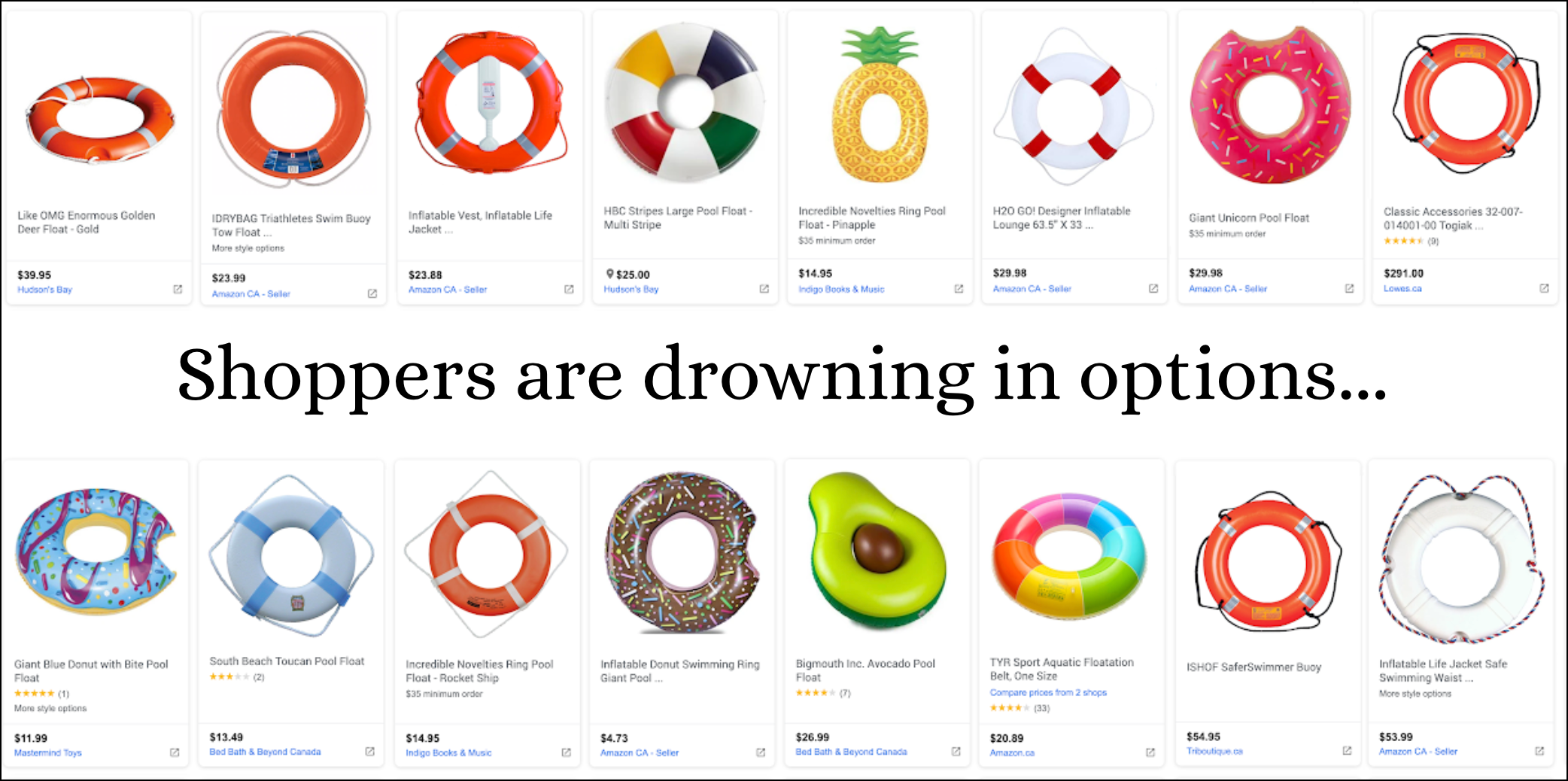Blog
Deep Discounting & Buyer Psychology
This article about deep discounting will surprise you. Here’s the story:
Price elasticity states that as price goes down demand goes up.
And this is why discounts improve conversions. To a point.
A full-price item discounted by 20% should generate a 20% lift in unit sales. At least that’s the expectation.
Increase discount by another 20% (on top of the original 20%) and expect to see a corresponding ~20% lift.
But This Logic Doesn’t Continue for Deep Discounting
Why? Because buyer psychology starts shifting.
First, let’s understand what’s going on:
Consumers are used to seeing a 20% discount.
We’re not used to seeing 80% discounts. So when we see those some of us start to wonder,
“Wait, why am I getting this insane discount, what don’t I know?”
We start considering scenarios:
- Is this item about to be phased out?
- Is there a defect with the item I’m not aware of?
- Is this company about to shut down? Inventory liquidation? If so, will I be able to make a return?
As you can see, a lot of chatter happens in the mind of the shopper.
So, What Is a Marketer to Do?
The solution is to add a message right next to the incredible discount with this phrasing: “why the heck is this item discounted [x]%??”
Here [x] is dynamic and reflects the actual discount being offered.
On click, show a popup and tell your story.
Here is an example:
Running retail stores is expensive. There are staff costs. Rent. Inventory costs. With multiple locations, those costs add up.
By eliminating those you end up saving.
But here’s the thing, only 7% of people in the US know about us.
Instead of spending more on advertising, our strategy is to pass even more savings onto you. Why? Our hope (fingers crossed) is you’ll tell your 5 closest friends about us. Think of this as a bribe 🙂
Deep Discounting Is Just One Strategy
If you have a product that’s deep discounted you definitely want to build a story around it. But, you can’t just rely on deep discounting. Sugar is fun but we can’t have that as our only source of energy.
To get the full conversion rate impact your sales pitch needs to cover the other things shoppers are looking for.
Beyond Deep Discounting What Else Do Shoppers Care About?
Here’s the reality, we’re living in a world of infinite choice. Shoppers are drawing in options:

I read somewhere that the average person sees around 5,000 ads in a day. These estimates can’t really be verified but I know consumers see a lot of ads and how many ads they see in 2025 is way more than what they saw in 2002. That’s for sure.
And because buyers are seeing so many ads and claims they are naturally skeptical. Therefore, the marketer’s toughest job is busting this skepticism.
Agree?
Yes
— or —
No
I’m now going to share our somewhat controversial approach to helping clients to grow their sales. But first …
Why Listen to Me
My name is Rishi Rawat and I’ve been running marketing experiments for the last 16 years. Our clients have invested over $3,900,000 with us to understand shopper behavior on their sites.
eCommerce is a giant space (there are over 12 million eCom sites) and while it’s impossible for me to study each of them each week I spend at least 5 hours studying how marketers are using clever marketing tricks. Each week I note at least 3 ideas for my swipe file. Speaking of swipe files:

Since you're liking this deep discounting article you're gonna love the conversion ideas I share in my weekly newsletter. Signup below. If it isn't as good as I'm making it sound unsubscribe with one click.
A Counterintuitive Solution No One Expects
Our secret is that we ignore 84% of all visitors to a site and triple down on one particular group, the Healthy Skeptics.



